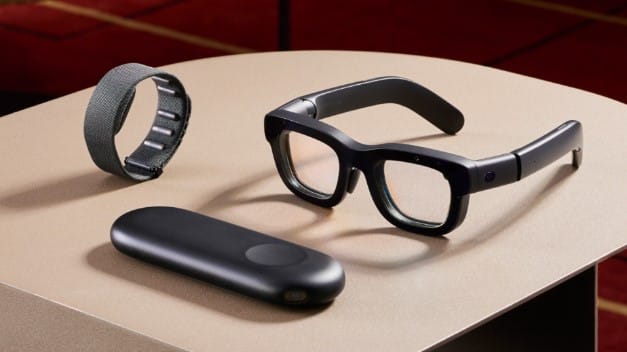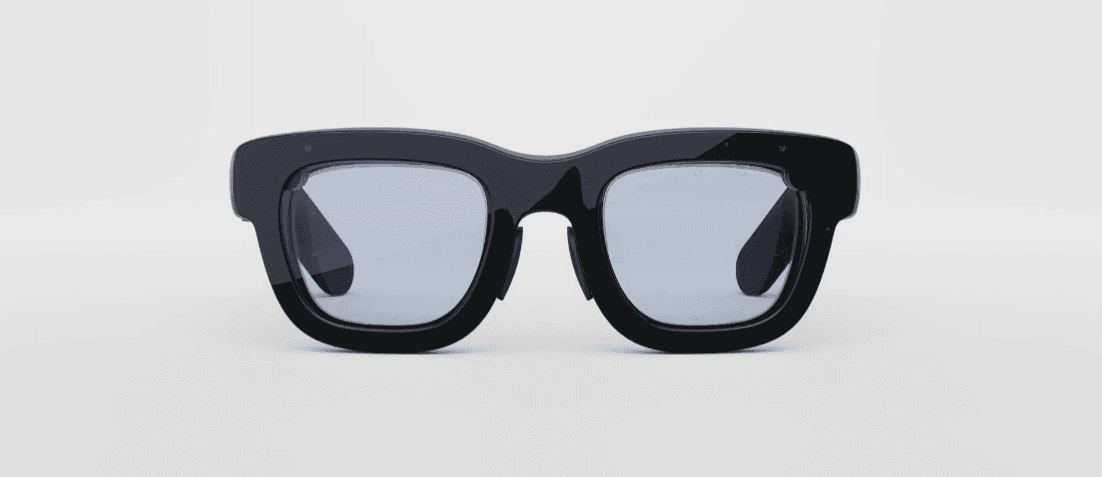Meta Orion AR Glasses are not just another head-mounted display to fall off the assembly line. They are the glasses that could perhaps shape the very future of wearable computing. Orion is the next ‘computational surface’, the successor to the universal, world-scale digital space that is the smartphone. If all goes according to plan at Meta, Orion, with its sleek AR-enhanced display, embedded AI, and battery life coupled with ‘relentless density’ of analogue and digital content, will make the smartphone seem like a mere intermediary step to reach the final goal.
Meta Orion AR Glasses Revolutionary Display Technology and Unmatched Visual Experience
The eye-fi applies tiny LED projectors allied to a new type of waveguide technology, which focuses dazzling colours through a lens made of silicon carbide, the hardest and most refractive material on Earth. The result is a high-resolution see-through image.
When they are calibrated to fit the shape of a user’s face, the glasses produce a seemingly perpetual view of the world overlaid with graphics stretching 70 degrees across the field of vision, roughly covering a normal human field of view. These displays don’t create that peephole effect characteristic of previous AR glasses, leading to a remarkably accurate experience.
Key Benefits of Orion’s Display Technology
70-Degree Field of View: Offers an expansive, immersive viewing experience.
Micro LED Projectors: Ensures sharp, clear visuals and readable text, even from a distance.
Silicon Carbide Lens high durability, is highly lightweight (80% of the weight of glass) and delivers increased optical fidelity in comparison with plastic or glass lenses.
Meta Orion AR Glasses Intuitive Controls with Neural Wristband Integration

Orion’s control system includes an EMG wristband that converts subtle, unconscious micro-movements in a user’s fingers into commands. It enables users to manipulate the AR interface without having to move their hand or body, providing a level of control more precise than a mouse. The wearer simply needs to point, select or navigate to a menu with one or two fingers.
Neural Wristband Features
Gesture-Based use hands to control apps and interface by using small pinch and thumb movements.
Haptic Feedback: Provides immediate confirmation when a gesture is registered.
Comfortable Design: Built with high-performance textile material for all-day wear.
Meta Orion AR Glasses Unparalleled Camera and AI Capabilities
Meta’s Orion AR glasses have seven cameras mounted around the frame for sophisticated hand- and eye-tracking, which in conjunction with AI can overlay digital information onto an ordinary view of the world.
Meta has demonstrated that users can use the glasses to track objects on a table or read a recipe in video demonstrations, showing that the glasses can perform the same sorts of complex recognition tasks that Wayfarer used to. Feeding the cameras’ feeds into the computer’s AI can create a dynamic experience of AR.
Meta Orion AR Glasses Lightweight Design and Enhanced Comfort

Despite its impressive technological content, the Orion glasses weigh less than 0.18 pounds. The frame is made of magnesium for strength without bulk and the user could comfortably wear the glasses for a whole day.
Ergonomic Design Highlights:
Magnesium Frame: Strong and lightweight, ensuring durability without compromising comfort.
Even Heat Distribution: Prevents overheating during prolonged use.
Sleek and Stylish: Designed to resemble regular eyeglasses for easy everyday wear.
Challenges and Future Prospects for Orion AR Glasses
While they are impressive technology, the Orion AR glasses are not yet for sale. Meta is still working on some components, such as the lenses, which have manufacturing challenges when scaled up. The glasses themselves cost upward of $10,000: as things stand, consumers are a long way off from being able to afford them. Meta is working on second-generation versions that are lower-cost and ready for mass manufacturing.
Future Plans for Orion
Lower-Standards Versions: With simpler enclosures made of less costly materials, Meta is already working on future models with slightly more resolution.
Next-Generation Improvements: Future versions will feature improved lenses and performance.
Consumer Access: Meta developers predict a few years before a consumer-ready version will be released and priced at around the same level as a top-end smartphone or laptop.
Strategic Approach to the AR Market
Rather, it’s a roadmap of Meta’s product strategy, with a gradual rollout of AR from initial simple devices to more intricate and fully integrated systems. The Ray-Ban Meta Smart Glasses, which offer AI-powered features without an integrated display, kick off Meta’s roadmap. Though a more sophisticated model with a rudimentary display, Hypernova, is next in line, the eventual goal is its companion – Orion.
Meta’s Product Roadmap
Ray-Ban Meta Smart Glasses: AR glasses with AI support but no display.
Hypernova: A lightweight, interactive AR headset with basic display capabilities.
Orion: The full-fledged AR glasses designed to eventually replace smartphones.
Conclusion: The Future of Augmented Reality with Orion
while Meta’s own Orion AR glasses are not available for sale quite yet, they are undoubtedly a strong indicator of the company’s ambition to deliver unparalleled immersive AR experiences powered by cutting-edge technologies and design concepts that the company itself helped pioneer. The more Meta is able to refine Orion, developing the glass, chips, software and optics, the better chance we stand at witnessing AR technology that is far more accessible than ever before.
When they arrive – if they ever arrive – the path will have embraced a certain number of technological tentpole innovations that are now coming to market, including Meta’s Orion glasses.

